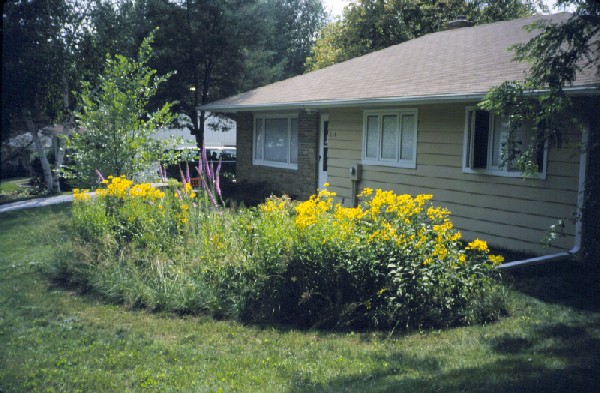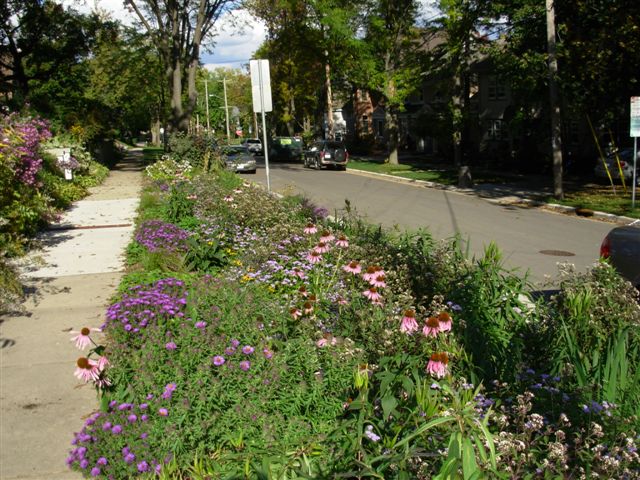By Roger Bannerman
Rain gardens help improve the quality of our lakes by capturing pollutants and infiltrating runoff. One additional benefit for Lake Wingra is that increased infiltration can help restore spring flows, which is the main source of year-round flows into Lake Wingra.
Out of the 600 rain gardens that have been installed around the City of Madison at least 80 of those are in the Lake Wingra watershed. The Friends of Lake Wingra (FOLW) hope to see many more rain gardens installed in the Lake Wingra Watershed to help reach a short term goal of restoring 10% of the infiltration lost to development. Efforts are underway to install enough rain gardens to infiltrate over 1 million more gallons of runoff! The FOLW have also provided funds for schools to build rain gardens and the Friends have educated homeowners about the importance of rain gardens.

Here are some helpful resources for you to learn how to install or afford a rain garden on your property:
How to Minimize Costs of Installing a Rain Garden
Terrace Rain Gardens: A program by the City of Madison will continue to install more rain gardens in city terraces during the reconstruction or resurfacing of residential streets. The city will offer cost-sharing to eligible homeowners. See more at: https:// www.cityofmadison.com/engineering/stormwater/rain gardens/ terracerain gardens.cfm
Native Rain Garden Plants: Discounted native plants are available to Dane County residents through the Plant Dane Program for about $2.25/plant. The program is open for orders around February each year: http://www.ripple-effects.com/plantdane
How to Choose Plants
Many resources exist to select what type of plants you can put in your rain garden. One easy option is to reference the City of Madison’s planting designs. Typically these designs are used for homeowners to select from for cost-share programs, but they are available for you to look at to borrow ideas: https://www.cityofmadison.com/engineering/stormwater/rain gardens/index.cfm
You can also look at the DNR’s homeowner rain garden manual (see link in next subsection)
How to Decide the Location and Size of a Rain Garden
If you want to build a rain garden, you can find a lot of help in a rain garden manual prepared by the Wisconsin Department of Natural Resources: https://dnr.wi.gov/topic/stormwater/raingarden/

